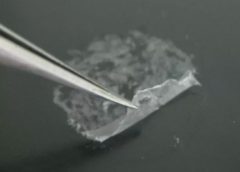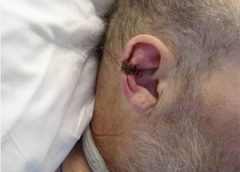http://www.latimes.com/science/sciencenow/la-sci-sn-obama-bacteria-20140918-story.html
Read MoreTag: WCA
Clinical Notes: Wound Photography, Lymphedema, GI Complaints
Clinician Resources: Opioid-Prescribing, Diabetes, Pressure Injuries
Here are a variety of resources you might want to explore.
Considering opioid-prescribing practices
Healthcare providers’ prescribing patterns for opioids vary considerably by state, according to a report in Vital Signs from the Centers for Disease Control and Prevention (CDC). Here are some facts from the report:
• Each day, 46 people die from an overdose of prescription painkillers in the United States.*
• Healthcare providers wrote 259 million prescriptions for painkillers in 2012, enough for every American adult to have a bottle of pills.
• Ten of the highest prescribing states for painkillers are in the South. (more…)
Best of the best, the sequel
By Donna Sardina, RN, MHA, WCC, CWCMS, DWC, OMS
Welcome to our second annual “Best of the Best” issue of Wound Care Advisor, the official journal of the National Alliance of Wound Care and Ostomy (NAWCO). This may be the first time you have held Wound Care Advisor in your hands because normally we come to you via the Internet. Using a digital format for this peer-reviewed journal allows us to bring you practical information that you can access anytime, anywhere and gives you the ability to access videos and other links to valuable resources for you and your patients. (more…)
Read MoreInsulin use, dialysis predicted poor wound healing after endovascular therapy
Critical Wound-Healing Proteins Described
Burn Wounds Protected by Plastic-wrap-like nanosheets
Like cling wrap, new biomaterial can coat tricky burn wounds and block out infection.
Wrapping wound dressings around fingers and toes can be tricky, but for burn victims, guarding them against infection is critical. Today, scientists are reporting the development of novel, ultrathin coatings called nanosheets that can cling to the body’s most difficult-to-protect contours and keep bacteria at bay.
The researchers are speaking about their materials, which they’ve tested on mice, at the 248th National Meeting & Exposition of the American Chemical Society (ACS), the world’s largest scientific society.
The meeting features nearly 12,000 presentations on a wide range of science topics and is being held here through Thursday. (more…)
Read MoreSage Products Introduces New Incontinence Clean-up Cloths
Saltier intravenous fluids reduce complications from surgery, study shows
Device–related pressure ulcers: Avoidable or not?
By: Donna Sardina, RN, MHA, WCC, CWCMS, DWC, OMS
A medical device–related pressure ulcer (MDRPU) is defined as a localized injury to the skin or underlying tissue resulting from sustained pressure caused by a medical device, such as a brace; splint; cast; respiratory mask or tubing; tracheostomy tube, collar, or strap; feeding tube; or a negative-pressure wound therapy device. The golden rule of pressure ulcer treatment is to identify the cause of pressure and remove it. Unfortunately, many of the medical devices are needed to sustain the patient’s life, so they can’t be removed. (more…)
Read MoreClinical Notes: Aspirin, Skin Infections, NPWT surgical incisions
Aspirin inhibits wound healing
A study in the Journal of Experimental Medicine describes how aspirin inhibits wound healing and paves the way for the development of new drugs to promote healing.
The authors of “12-hydroxyheptadecatrienoic (12-HHT) acid promotes epidermal wound healing by accelerating keratinocyte migration via the BLT2 receptor” report that aspirin reduced 12-HHT production, which resulted in delayed wound closure in mice. However, a synthetic leukotriene B4 receptor 2 (BLT2) agonist increased the speed of wound closure in cultured cells and in diabetic mice. (more…)
Read MoreCreating an effective care plan
By Jeri Lundgren, BSN, RN, PHN, CWS, CWCN
The development of a care plan related to skin integrity can be challenging for any clinician. It takes a strong understanding of skin integrity risk factors and knowledge of how to modify, stabilize, and eliminate those risk factors. This article provides tips for the care-planning process. (more…)
Read More

